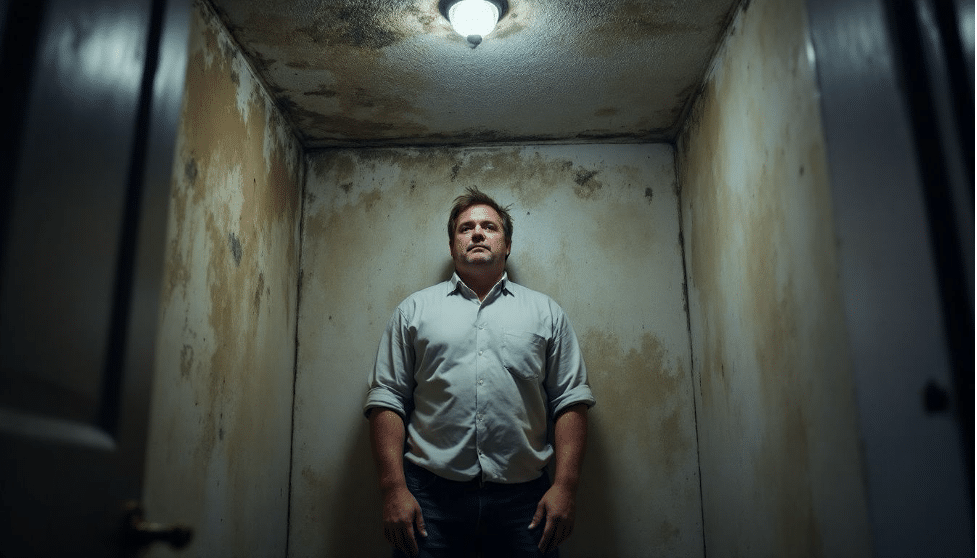Mold in your home can be a real headache, right? Dry fog mold removal is a quick fix that tackles the problem without tearing up walls. We will break down dry fog removal cost and what impacts it.
Stick around—it could save you some cash!
What Is Dry Fog Mold Removal?

Dry fog mold removal uses a fine mist to kill mold spores. The fog contains antimicrobial cleaners that eliminate fungus on contact. It spreads through the air, reaching crawl spaces, HVAC systems, attics, and other tight spots.
This method targets toxic molds like black mold and green mold without damaging surfaces. It’s fast and doesn’t require tearing out walls or drywall. For homes dealing with high humidity or musty smells, dry fog can treat the issue in hours instead of days.
Average Cost of Dry Fog Mold Removal

Dry fog mold removal usually comes with a price tag that depends on various factors. Costs can range widely, so it’s important to know what affects the final bill.
Cost Range for Dry Fog Mold Removal
Costs for dry fog mold removal usually range from $1,500 to $3,000 at the lower end. This is often enough for small areas like bathrooms or sections of a basement. Treating furnace systems can cost between $3,000 and $5,000.
Central air conditioning systems may reach up to $10,000 due to their complexity.
Prices vary by location and level of mold infestation. Large-scale projects or whole-house treatments tend to cost more. Some costs also depend on specific tasks like air duct cleaning or HVAC system decontamination.
Factors affecting prices are next in line!
Factors Affecting Dry Fog Mold Removal Costs
Mold location plays a big role in cost. Hard-to-reach spots like air ducts or crawl spaces need more effort, which raises prices. For example, HVAC mold removal can cost between $1,500 to $3,000 due to its tricky nature.
The size of the mold infestation also impacts pricing. Small areas under 10 square feet may only cost a few hundred dollars. Larger infestations can climb up to $6,000 or more for whole-house treatment.
Mold type matters too—black mold (stachybotrys chartarum) is expensive because it’s toxic and needs extra care during remediation.
Dry Fog Mold Removal Cost by Location

The cost of dry fog mold removal changes based on where the mold is growing. Different spaces come with their own challenges, which can affect pricing.
Attic Mold Removal
Attic mold removal costs $1,500 to $9,000. Prices vary based on size and severity. Mold often grows in attics due to high humidity and poor ventilation. Costs may range from $10 to $30 per square foot.
Insulation replacement can add extra expenses.
Mold types like stachybotrys chartarum or aspergillus mold commonly appear in damp attic spaces. Signs include musty smells or visible stains on ceilings or walls. Professional mold remediation ensures thorough cleaning and mold prevention for better indoor air quality.
Basement Mold Removal
Basements often face high humidity, promoting mold growth. Mold removal costs here range from $1,500 to $4,000. Prices can go up depending on the size and spread of the infestation.
Expect to pay around $10–$30 per square foot.
Moisture control plays a big role in stopping basement mold return. Water damage from leaks or floods makes basements even more vulnerable. Signs like musty smells or visible spores should not be ignored.
Professional remediation includes cleaning walls, floors, and any affected furniture using antimicrobial cleaners. Investing early saves money later by avoiding structural repair needs caused by prolonged exposure to toxic mold types like stachybotrys chartarum or cladosporium mold spores!
Bathroom Mold Removal
Bathroom mold removal costs between $500 and $1,500. The price can vary based on how much of the space is affected. For small spots, it might cost around $10 per square foot. Larger growths near showers or under sinks can push the bill higher due to moisture and water damage.
Mold thrives in bathrooms due to high humidity. Tackling black mold or toxic varieties like stachybotrys chartarum adds specialized work and increases costs. Hiring professional mold remediation experts ensures safe removal of fungi while reducing allergens that trigger coughing or asthma attacks.
Crawl Space Mold Removal
Crawl space mold removal can cost between $500 and $2,000. Pricing depends on the area’s size and mold’s spread. Costs per square foot range from $10 to $30, making smaller crawl spaces more affordable to treat than larger ones.
Mold in crawl spaces often grows due to high humidity or water damage. Left untreated, it can harm air quality inside your home by spreading mold spores through vents. Mold remediation professionals may use antimicrobial cleaners and air scrubbers during treatment for effective results.
HVAC Mold Removal
Mold in HVAC systems spreads quickly, causing major health problems. Removing it costs between $3,000 and $10,000. Price varies based on the system’s size and severity of mold infestation.
Professionals often charge $10 to $30 per square foot for ductwork cleaning. Mold testing may add to the cost but helps detect hidden spores. Using air scrubbers during treatment improves air quality and stops mold from spreading further.
Whole-House Mold Removal
Clearing mold from an entire house can cost between $10,000 and $30,000. For larger homes, like a 2,000-square-foot property with severe issues, prices may hit the high end of that range.
Whole-house remediation often addresses HVAC mold removal to stop spores from spreading through air ducts.
The process involves treating every surface with antimicrobial cleaners and using air scrubbers to remove floating spores. It’s common in cases of black mold or when water damage has affected multiple areas.
Mold inspection before starting helps identify hidden growth in walls or crawl spaces. This thorough approach ensures complete elimination but comes at a hefty price tag for homeowners dealing with toxic infestations.
Cost by Size of Affected Area

The size of the mold problem plays a big role in how much you’ll pay, and smaller areas often cost less, but larger ones can rack up bills quickly—check out the details to see what fits your situation best!
Small-Scale Mold Removal
Small-scale mold removal typically involves areas under 50 square feet. Costs range from $500 to $1,500 for this size. Common places include bathrooms and small sections of walls or ceilings damaged by water.
Mold remediation professionals often use dry fogging machines and antimicrobial cleaners to kill mold spores quickly.
Homeowners might spot black mold or white mold in these spots due to high humidity or leaks. Ignoring them can lead to respiratory problems like hay fever or asthma issues. Hiring experts ensures safe cleanup while preventing further spread, especially in vulnerable spaces like crawlspaces or HVAC units.
Medium-Sized Mold Removal
Larger areas, like a 200–300 sq. ft. basement or attic, fall under medium-sized mold removal. The costs range from $2,000 to $9,000 based on the type of mold and damage level. Black mold or high moisture may drive expenses higher due to extra work and materials.
This process often needs professional tools like air scrubbers and antimicrobial cleaners. Experts might also manage hidden spots in walls or HVAC ductwork during remediation. Avoiding delays is key since spreading spores can lead to higher cleanup bills later on!
Large-Scale Mold Removal
Large-scale mold removal costs can skyrocket due to the size and severity of contamination. For 1,000 sq. ft., expect to shell out between $10,000 and $30,000. Homes or spaces with widespread black mold or toxic mold may fall in the higher range.
Mold remediation for entire houses often requires specialized equipment like air scrubbers and antimicrobial cleaners.
Whole-house remediation involves treating everything—walls, HVAC systems, crawl spaces, and more. High humidity areas or water damage increase challenges and expenses. Contractors must address moisture control to prevent future growth.
The labor-intensive process also drives up mold removal cost compared to smaller projects.
Cost by Type of Mold
Different molds can affect costs, as each type requires specific treatments. Black mold, for example, is usually more expensive to remove due to its health risks.
Black Mold RemovalBlack mold, also called *Stachybotrys chartarum*, is one of the most dangerous molds. The cost to remove it ranges from $800 to $7,000. This depends on how much mold has spread and where it grows.
Areas like bathrooms or basements with water damage often have higher removal costs due to tricky spaces.
Exposure can cause runny noses, respiratory problems, or allergies for many people. Professional black mold remediation uses tools like air scrubbers and antimicrobial cleaners to tackle the infestation safely.
Mold inspectors may first test for spores before starting cleanup work in affected areas like crawl spaces or attics.
White Mold Removal
White mold removal can cost between $700 and $6,000. This price depends on the area affected, the size of the space, and how much work is needed. White mold often grows in damp areas like basements, crawl spaces, or bathrooms.
It thrives where there’s high humidity or water damage.
Professional services often use antimicrobial cleaners to treat white mold effectively. Mold spores from types like aspergillus can spread fast if not removed quickly. Hiring experts for inspection and remediation lowers health risks such as respiratory problems or allergic reactions caused by mold growth.
Early action saves money and prevents further damage to your home.
Green Mold Removal
Green mold, often caused by Cladosporium or similar fungi, can cost between $700 and $6,000 to remove. The price depends on the size of the infestation and location. Small spots in a bathroom may lean toward the lower end.
Larger outbreaks in an attic or HVAC system could hit the higher range.
Moisture control is key to tackling green mold. This type thrives in damp spaces like bathrooms or basements with high humidity levels. Professionals use air scrubbers and antimicrobial cleaners to treat infected areas effectively.
Skipping proper remediation risks spreading mold spores further into your home, causing respiratory problems for you and your family.
Professional Mold Removal Process
Professional mold removal is more than just spraying chemicals. It involves careful steps to get rid of mold and make your home safe again.
Initial Assessment and Containment
Experts first inspect the area to find all mold growth. A mold inspection costs between $450 and $800. They check moisture levels, visible damage, and hidden spots like walls or HVAC systems.
They isolate affected areas with plastic sheeting and tape. Negative air pressure machines may run to stop mold spores from spreading. Keeping it contained reduces harm during the removal process.
Fogging Application Process
The fogging process fills the treated area with a dry antimicrobial mist. This mist targets mold spores and toxic mold on surfaces and in the air. It kills growth without wetting walls, furniture, or carpets.
HEPA vacuums may follow fogging to trap lingering spores. Air scrubbers costing between $500–$1,000 help clean the air further by filtering out tiny particles left behind. This step ensures cleaner indoor air after treatment.
Air and Surface Sampling
Air and surface sampling helps measure mold levels. Professionals use tools to collect samples from the air or surfaces in your home. It often costs around $1,000 per air sample. For severe cases, this can climb up to $50,000.
Mold spores floating in the air are invisible but harmful. Surface testing checks for active mold patches on walls, floors, or furniture. Testing ensures proper mold remediation is done where needed most.
It’s a vital step after fogging treatments to confirm clean and safe living spaces.
Post-Treatment Monitoring
Sampling verifies the air and surface conditions, but monitoring ensures lasting results. Experts may use air scrubbers to remove remaining mold spores. These machines maintain negative air pressure, keeping clean zones safe.
Technicians revisit to test moisture levels and check for new growth signs. Mold inspection costs between $450–$800 help confirm success. Regular monitoring prevents mold from regaining a foothold in high-humidity areas like basements or bathrooms.
Additional Considerations and Costs
Mold removal isn’t just about clearing the mold. You might face extra costs for repairs, inspections, or preventive fixes to keep your home safe and healthy.
Mold Testing and Inspection Costs
Mold testing usually costs between $450 and $800. This process helps identify mold types like black mold, stachybotrys chartarum, or aspergillus mold in your home. Air and surface samples may be collected to locate problem areas.
Inspection fees also range from $450 to $800. Inspectors check for high humidity, water damage, or musty smells that promote mold growth. These services ensure accurate results before starting HVAC mold removal or whole-house remediation projects.
Repairing Mold Damage
Fixing mold damage can be costly. Replacing drywall costs between $1,000 and $2,900. Carpet replacement ranges from $775 to $2,600. These repairs are often needed after removing severe mold infestations.
Water damage worsens the situation. High humidity or leaks lead to structural decay like dry rot in wood or damaged floors. Professional plumbers may need to replace pipes or fix leaks before further repairs begin.
Antimicrobial cleaners might also be necessary for sanitizing affected areas during the process.
Preventive Measures Against Mold
Keep humidity between 30%–50%. Use a dehumidifier if needed. Fix leaks in pipes, roofs, or walls right away. Even small drips can feed mold growth.
Clean and dry wet areas within 24-48 hours to stop mold spores from spreading. Check bathrooms, basements, and crawl spaces regularly for signs of moisture. Keep gutters clean to avoid water buildup near your home’s foundation.
DIY Mold Removal vs. Hiring a Professional
DIY mold removal might seem cheaper, but it can get tricky fast. Hiring a pro costs more upfront, but they have the tools and know-how to handle dangerous molds like black mold safely.
Cost Comparison
Doing it yourself costs around $50 to $300. Hiring professionals, though, ranges from $1,500 to $9,000. The gap is huge because DIY methods use basic supplies like sprays and brushes.
Professionals use advanced equipment like air scrubbers and antimicrobial cleaners.
DIY mold removal saves money but carries risks. In contrast, hiring pros ensures thorough remediation of toxic molds like black mold or stachybotrys chartarum. Large infestations in areas like HVAC units or crawl spaces need professional handling – no cutting corners there!
Risks and Benefits
Mold removal with dry fog has its pros and cons. The process tackles mold spores quickly, including stubborn ones like black mold or green mold. It also works on hidden areas professionals detect, such as HVAC vents or behind walls.
This prevents respiratory problems and limits damage from toxic molds like stachybotrys chartarum. Plus, no demolition is involved, saving time and money.
On the downside, it’s hard for a DIYer to handle safely or effectively. Missing spots can let indoor molds grow back fast in high humidity conditions. Professional help adds cost—averaging $1,500 to $3,000 based on the area size—but ensures thorough remediation of over 10 sq ft of infestation.
Skimping here risks serious health issues later on!
How to Save Money on Dry Fog Mold Removal
Cutting costs on dry fog mold removal doesn’t mean cutting corners. Shop around for quotes, and keep your home’s humidity in check to avoid future problems.
Comparing Estimates from Professionals
Call several mold remediation professionals for quotes.
ServiceMaster, for example, charges between $1,200 and $4,500. Servpro typically costs $10–$25 per square foot or anywhere from $1,500 to $10,000 per job.
Pricing depends on the size of the area and severity of mold infestation.
Ask each company about their process and included services. Some may bundle inspection or testing with treatment costs. Others might charge extra for these steps. Comparing rates helps spot overpriced services while staying within budget limits.
Continue by considering maintenance plans next to save more money long-term!
Scheduling Preventive Maintenance
Preventive maintenance can save you money and stress. Fix leaks fast to stop mold before it grows. Regular checks of areas like attics, basements, or crawl spaces help catch issues early.
High humidity is a red flag for mold growth; use moisture control methods like dehumidifiers.
Spending $150–$7,000 on prevention may seem steep, but it’s cheaper than full-blown remediation later. Monitor bathrooms and HVAC systems closely since they often hide mold spores.
Bottom Line
Dry fog mold removal is an effective way to tackle mold while keeping your home safe. Costs can vary widely, so planning ahead matters. Hiring skilled professionals saves time and ensures proper cleanup.
Measure your budget, compare quotes, and look for ways to prevent future mold growth. A clean home means healthier air for everyone!
